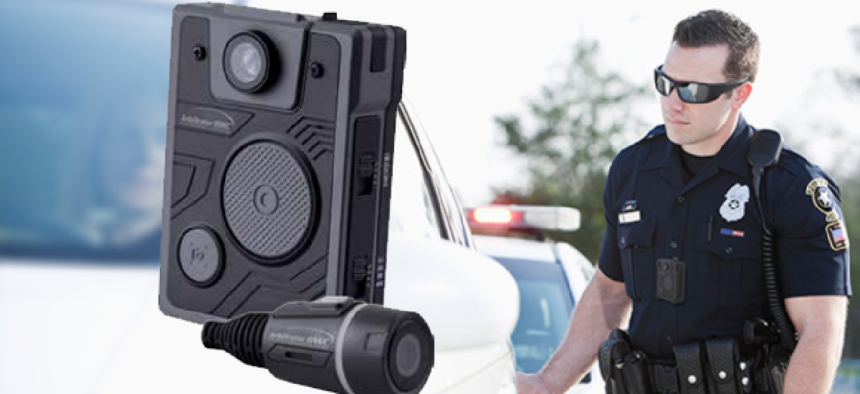Panasonic debuts lightweight, body cam suite

The solution includes the body-worn camera, the Arbitrator 360° HD in-car digital video recording system and evidence management software.
Videos of police clashes with the public have been the source of much news lately, whether the video comes from stationary surveillance cameras, a police officer’s body camera or a bystander’s smartphone. After a passer-by captured the aftermath of Eric Garner’s death in New York last summer, and another caught the shooting of Walter Scott by a South Carolina police officer in early April, hotly debated issues of race and technology emerged.
“It’s getting a lot of attention now, but, in fact, citizens have always -- and have been for some time -- taping incidents. Go back to Rodney King. That incident was videotaped from afar,” said John Cusick, product manager of Panasonic’s Arbitrator body worn camera (BWC).
Police have used video for more than 30 years, first in dashboard-mounted cameras, and more recently with body-worn devices, which are quickly becoming more sophisticated.
Panasonic’s recently released 4.6-ounce body-worn camera features 720p high-definition resolution, digital image stabilization and low-light capabilities. It’s ruggedized and water-resistant, and it has a built-in global positioning system so that it can automatically record metadata including location, time, date and officer ID. That ID also means multiple officers can share a single device because a log-in prevents co-mingling of recordings.
Panasonic sells Arbitrator BWC as part of its SafeServ Evidence Management Software, a single platform for storing and managing video from the bodycam and the vehicle-mounted Arbitrator 360° HD, to provide a literal complete picture.
While individual law enforcement agencies set policies on what should be recorded and when recording should start, the SafeServ system ensures that once the high-definition video is recorded, it cannot be tampered with or deleted from the camera, although copies can be made.
The data is encrypted according to IEEE 802.11 standards and can be offloaded via Wi-Fi, USB or docking stations. It goes into Panasonic’s Unified Evidence Management System, a single platform for storing and managing video from body-worn and car-mounted devices.
“Our system has a process of validating that the file in fact came intact and was transferred holistically so the whole file was there, and we begin what we call chain of custody,” Cusick said. Essentially, he explained, Panasonic gives each video a fingerprint that travels with it for its life. “We monitor that file, watch that file all the time in the background and can report its location and who viewed it.”
The video is stored on the local devices until it is offloaded and verified, he added. Then it can be stored on-site or in the cloud -- or both, depending on an agency’s preferences.
“We don’t remove [data] from the device until we’ve confirmed that it’s reached the back-end destination. Once that process is complete and we re-verify the file is whole and matches the validation criteria, then we send the command back to go ahead and delete the copy on the worn device because we now have that copy retained at the server level.”
But the cameras are just the front end of the solution. “One of the challenges of a body-worn [camera] is just the copious amount of data that you produce, and there’s a lot of consideration into what you do with all those hours and hours and hours of video,” he said, adding that Panasonic has proprietary compression methods to help reduce file size.
The amount of storage a department needs depends on several factors, including how often officers take recordings and how long the videos need to be retained, but the industry average is 1 gigabyte per hour, Cusick said.
The body-worn and in-vehicle cameras work only with Panasonic’s suite, not outside storage and server systems. That pairing is crucial, Cusik said, to proper documentation.
“There is an expectation that body-worn cameras will be the panacea that will always show us the event and clearly tell the story,” Cusick said. “We know that’s not always the case. The person is moving. It’s hard to find a stable video. We would always recommend you have body-worn and in-vehicle.”
The company’s production schedule calls for updates to the software and firmware about twice a year, although bug fixes will be issued as needed. The hardware typically lasts two and a half to three years, Cusick said.
In 2013, a survey of police departments by the National Institute of Justice found that 75 percent said they do not use body-worn cameras, but that is likely to change.
And Panasonic isn’t the only company seizing on the opportunity. Seattle-based VIEVU, for instance, has two body-worn camera options and recently signed an agreement to sell the products in Canada as well as in the United States.
NEXT STORY: Can All City Services Fit on One App?





